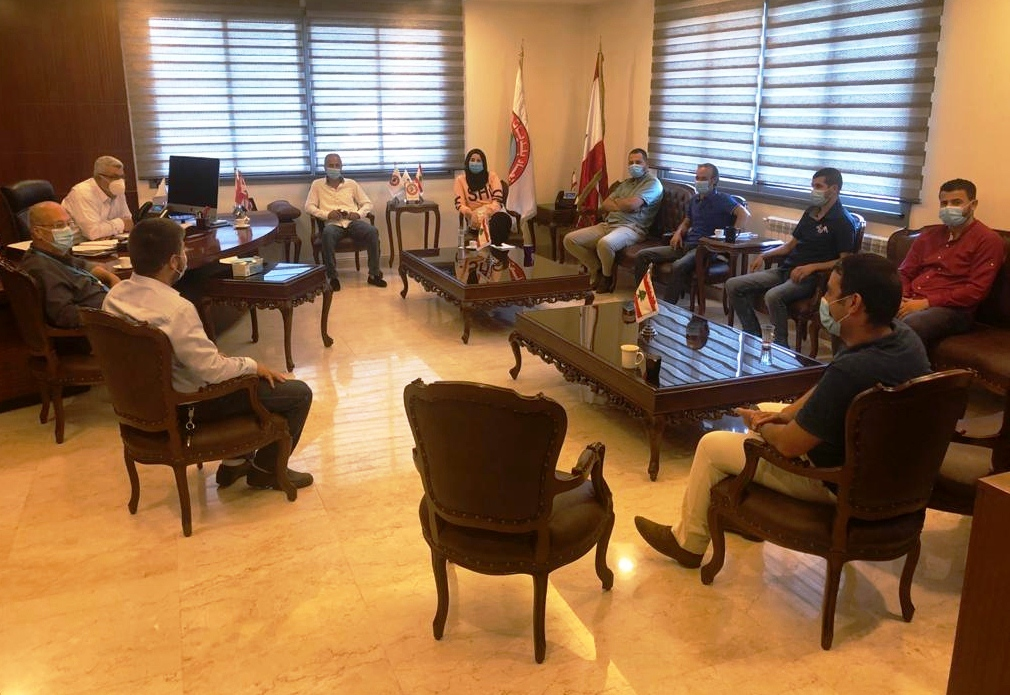Union of Dannieh Municipalities, Lebanon
Engaging the citizen to be part of the Emergency Response Plan to fight against COVID-19

Basic City Data
Population size: 245000
Population Growth Rate(%): 38.00
Surface Area (sq.km): 364
Population Density (people/sq.km): 1884
GDP Per Capita (U.S.$): 1000
GINI Index: 0.5
Main Source of Prosperity (e.g. industry, trade, tourism, creative industry, etc.) Tourism and agriculture.
The Union of Dannieh Municipalities is a union within Lebanon, a country facing many economic and political difficulties even before the COVID-19. Dannieh, although a region rich in its resources, has a seasonal economy that depends on agriculture and tourism and is affected during the wintertime. It was overwhelmed by the challenges and tasks it was facing, such as the shortage in staff, funding along with social and economic challenges. It was facing extreme challenges brought about by Lebanon crisis along with the COVID-19 lockdown. The budget is limited and the needs are excessive.
The Union of Dannieh Municipalities has established an Emergency Response Plan with 15 committees of volunteers from youth with a high level of education and specialization after a session held with stakeholders from the community who agreed upon the importance and need of establishing the Crisis Cell. The Union has coordinated with the 17 municipalities that were under its umbrella and has cooperated with active people in the civil society to provide funding and support.
This initiative had relied on the use of technology. The collected data that covered different criteria such as age, gender, income, disabilities and so on within one committee inside the Cell was shared with other committees, which is considered an innovation in the area. The use of shared folders and WhatsApp groups has helped facilitating communication between committees inside the cell and with people. Priority of work was dedicated to the marginalized groups.
The initiative connects the municipal staff, other municipalities under its umbrella, the 15 committees, citizens and the community at large with information quickly and effectively, through using multimedia and technology as well as traditional means. It encouraged citizens to be more active and involved, and it has shown their abilities and skills. They were attending meeting, suggesting ideas and implementing projects.
The initiative efficiency has improved over time compared to the beginning of the crisis as new ideas came from the community. It is now more credible and includes more citizens and entities. Thus, it has proved to be sustainable and can be replicated within the country and region. It has provided assistance to citizens linking a wide range of social and community resources.
The TC recognizes the value in the initiative because of its engagement with different partners especially the youth. It shows a capacity to be collaborative and flexible during emergency to advance higher goals. It demonstrates the ability of the community to put the necessary structure to find help within the community. The initiative evolved and is sustainable and enables the community to face any other future crisis.
The TC recommends the initiative as it encouraged the youth and citizens and give them the opportunity to play a role in their community and to feel responsible of themselves and others. They are now part of the Union; they participate in its periodic meetings as well as in proposing development projects. Moreover, the efficiency of the initiative has improved compared to the beginning of the crisis. It is now more credible and includes more people and cover larger areas. Locals and residents became more cooperative, aware and integrated. The initiative can be replicated within the country and the region.


 In Focus | World Cities Day: People-Centred Smart Cities
In Focus | World Cities Day: People-Centred Smart Cities City Stories | Fostering community resilience: A lifeline for the Central African Republic
City Stories | Fostering community resilience: A lifeline for the Central African Republic In Focus | Innovative Education, Empowering Futures
In Focus | Innovative Education, Empowering Futures




















 Tel: +86 020 3780 4434
Tel: +86 020 3780 4434 Email: info@guangzhouaward.org
Email: info@guangzhouaward.org Address: Unit 01-7, 28th Floor, No. 7, Chunrong 3rd Road, Tianhe District, Guangzhou, Guangdong, 510000, PRC
Address: Unit 01-7, 28th Floor, No. 7, Chunrong 3rd Road, Tianhe District, Guangzhou, Guangdong, 510000, PRC




